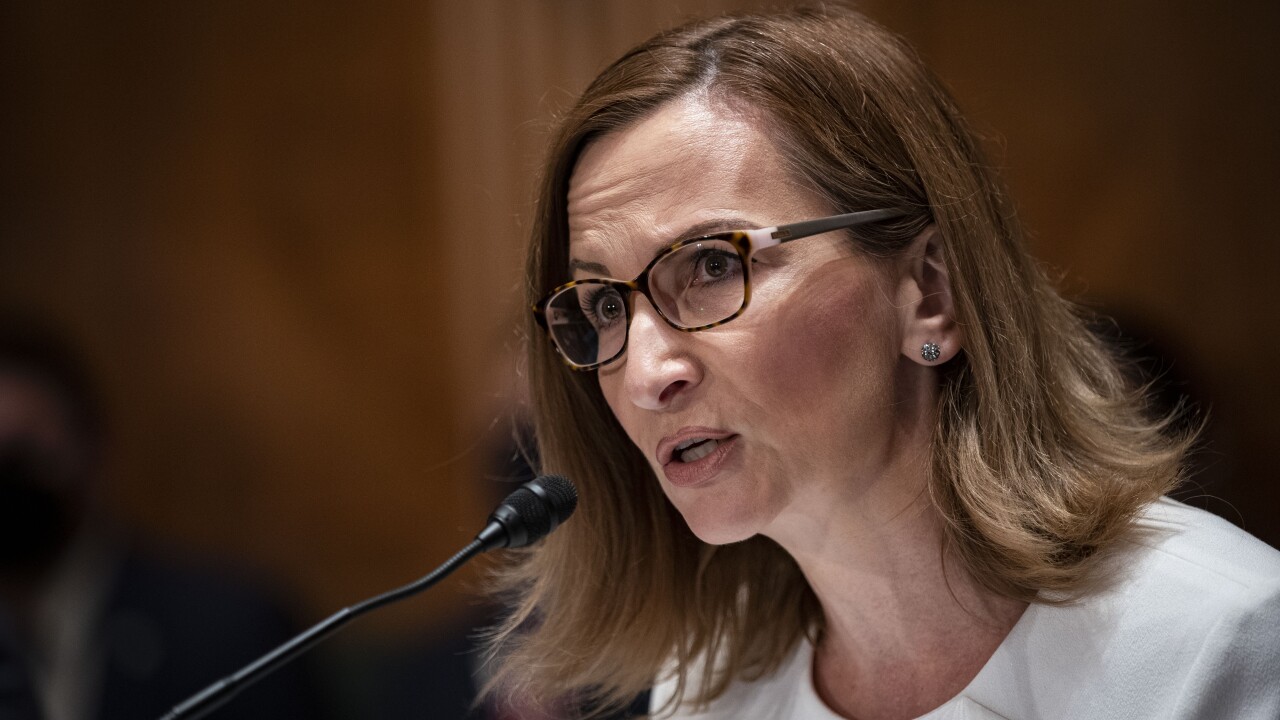- Key insights: Block is updating Cash App's menu to draw more consumers into its ecosystem, hoping they will use it as their primary banking relationship.
- What's at stake: Fintechs and neobanks such as Chime have long fought for banks' share of consumer deposits.
- Forward look: Cash App is working on launching a P2P payments service that uses stablecoins, which will allow consumers to send payments to any digital wallet.
Cash App is getting a glow up from its peer-to-peer beginnings.
Block is making good on its
The payment company launched 11 product updates this week at an event in New York City, including Cash App Green, a benefits program based on monthly Cash App spend, payments that run on bitcoin's Lightning rail, forthcoming peer-to-peer stablecoin payments, teen savings accounts and a chat bot called MoneyBot.
It's all part of a strategy that CEO Jack Dorsey laid out in May of this year after Cash App had a surprise slowdown that impacted first-quarter earnings. Since then, Block has rolled out a
"We're trying to build the financial operating system for the next generation," Owen Jennings, Block's business lead, told American Banker at the launch event Wednesday.
"What that fundamentally means is that we're investing across a number of different areas, [including] our network products, our banking products, our commerce products, our bitcoin products, and now … our AI and automation products, which is a new massive pillar in the ecosystem," he said.
Reaching the young
Teens and families are a big part of that focus, Jennings said.
Younger customers tend to use Cash App because they are digitally native, which Block hopes to capitalize on with its savings product that offers 3.5% annual percentage yield. It's also hoping to speak to younger consumers' perceived
"That's a really critical period of time when somebody turns 18 and they do potentially get more [options] in terms of how they want to participate" in financial services, Jennings said. "We want to get to a place where there's no reason to consider anything else."
With the release of Cash App Green, Block is also taking aim at neobanks such as Chime and other peer-to-peer platform offerings such as Venmo's credit card, Aaron Press, a research director at IDC Insights, told American Banker.
"I can't say [Cash App Green] is critical to their success, but it is a logical growth direction," Press said. "The interest rate, in particular, is attractive."
But Block's focus on teens also provides the company access to a wider pool of potential users: the teens' parents.
"Kids don't seem to really age out, although they may reduce their use over time," Press said. Equally important, however, is the financial connection between teens and their parents. These types of accounts allow easy movement of funds between parents and kids, and can, in some cases, end up engaging the adults who would otherwise be uninterested in app-based payments."
Bitcoin payments are here, stablecoin payments forthcoming
Cash App also launched bitcoin payments on the Lightning network, a layer 2 protocol built on the bitcoin blockchain. Cash App users can access a bitcoin map to see which nearby Square businesses accept bitcoin, and pay those merchants using their bitcoin for goods and services. Later this month, users will be able to pay on the Lightning network using fiat currency with no conversion fee.
Yet despite Block's insistence that bitcoin has longevity as a payment instrument, getting consumers to use it as one remains a hurdle, Aaron McPherson, principal at AFM Consulting, told American Banker.
"A consumer usually doesn't care if a merchant saves on fees, unless they are getting a discount themselves," he said.
Cash App also said it would be launching peer-to-peer stablecoin payments in 2026, which will effectively allow Cash App users to send funds to any digital wallet, regardless of jurisdiction.
Stablecoins are the ideal P2P payments infrastructure because they bypass traditional banking rails that payment apps are built on, such as ACH, card networks and the correspondent banking system, said Simon Taylor, head of market development at Tempo, in a LinkedIn Post.
"Stablecoins bypass all of it," he said.
Block did not say which stablecoins it would support, but hinted that it would support multiple stablecoins at launch.
"I am leaning toward a back-office view of stablecoins, where they are largely invisible to consumers, and are used to make settlement cheaper and faster," McPherson said. "For what it's worth, not one person I've talked to about stablecoins who isn't in the payments industry has any idea what they are. They have not penetrated popular consciousness, unlike bitcoin."






